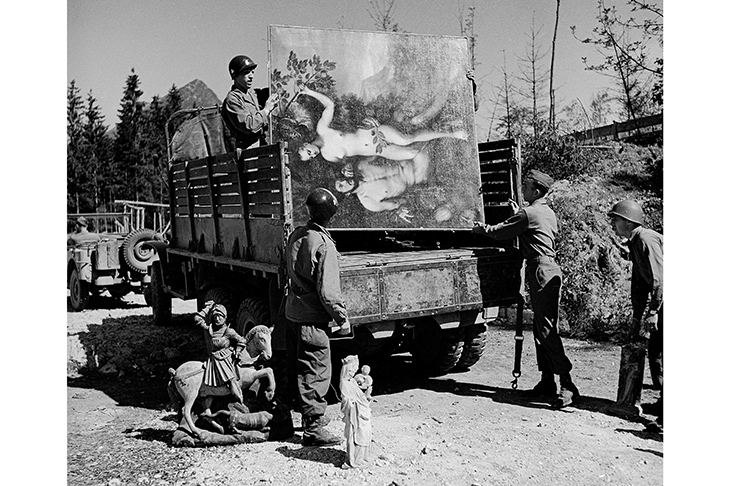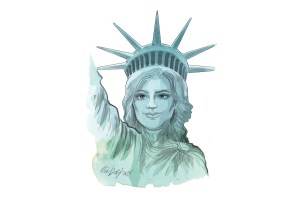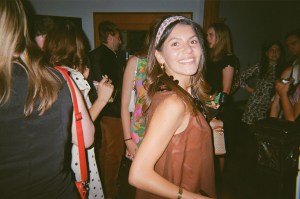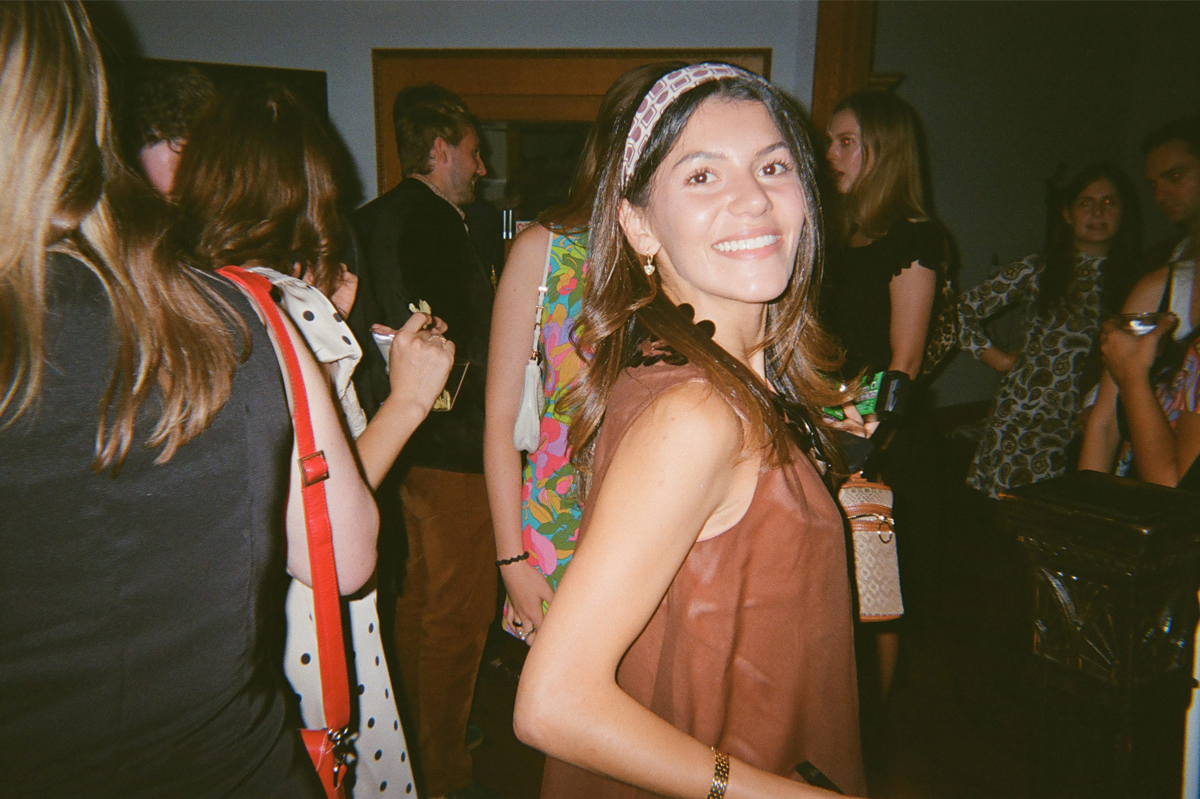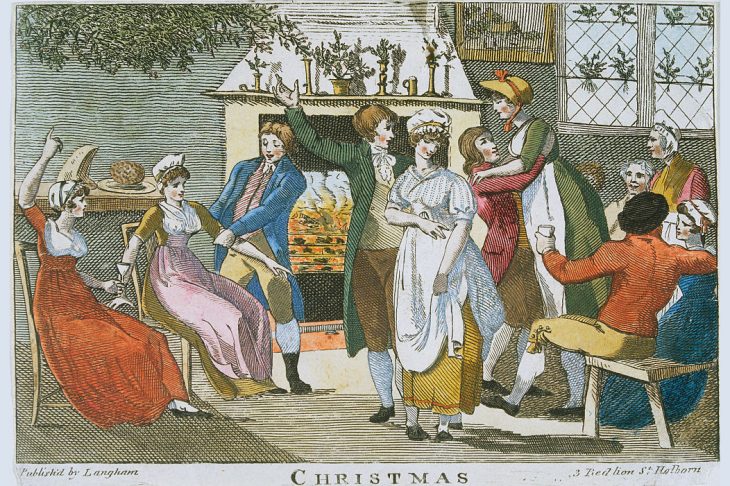Making one’s fortune in Occupied Paris was largely a matter of knowing the right people: in fact, the further to the right the better. In 1941, Bruno Lohse, a lowly SS officer and art history PhD, was languishing on the Baltic coast recovering from a gunshot wound when he was seconded by Hermann Göring to work as his ‘personal art agent in Paris’, where he became one of history’s ‘greatest all-time art looters’.
Abroad in the lawless city — able to produce, for any purpose, authorization papers bearing the Reichsmarschall’s signature, with their talismanic power to instruct ‘all offices of the state, party and armed forces to support his work’ — Lohse reigned as the self-styled ‘King of Paris’: a charismatic cultural pirate in expensive civilian clothing, surrounded by money and women and chauffeured cars. Unofficially, he also co-directed the ERR, a semi-clandestine Nazi party task-force operating out of the Museé du Jeu de Paume. In principle, the ERR’s euphemistic function was to ‘safeguard heirless property’; in practice, it plundered the cultural possessions of French Jews, often in lightning raids on private homes at which an art historian would be conveniently on hand to point out those items most worth safeguarding.
This policy of systematic pillaging was controversial, even among prominent Nazis — Alfred Rosenberg, for example, pointed out that such displays of avarice risked giving Nazism a bad name. The plundering was, however, an indispensable means to the vast project of cultural self-worship envisaged by Göring. At Carinhall, his country residence, he amassed a collection of 2,000 pictures (‘the finest art collection in private hands in Europe,’ he would boast later, in Allied captivity). At the zenith of his power, Göring had one of his four personal trains specially redesigned to transport paintings, and, beginning in 1940, went on shopping sprees, loading the outbound carriages with ‘stacks of freshly minted Reichsmarks’, touring Occupied Europe ‘in collecting mode’.
The ERR, for their part, assumed the function of a genocidal interior-design service. Göring’s personal train would alight in Paris, and at a few hours’ notice Lohse and his staff would prepare the Jeu de Paume, ‘adding rugs, palm trees and comfortable furniture — and, of course, arranging for fine champagne’. Göring would survey the gallery, or, as in one photograph, recline as artworks were presented directly to him. Many of these were simply stolen; other times, pieces were acquired via a practice known as ‘technical looting’, coercively bought in the devalued French currency; still other times, Göring’s men would exchange particularly valuable pictures for protection, a variation on the highwayman’s threat: ‘Your Monet or your life.’
The ERR, notably, did not always succeed in making fellow-traders an unfair deal. Perhaps in deference to their patron’s tastes, they seem to have agreed several extraordinarily near-sighted trades with collaborationist Swiss dealers: swapping, on one occasion, 11 ‘degenerate’ pictures (including a Braque, Cézanne, Degas, Matisse and Picasso) for ‘a northern Italian portrait of a bearded man and a hunting still life’; or on another occasion, trading 28 Impressionist paintings for one early Rembrandt and two Flemish tapestries.
Although Lohse is the titular figure, Petropoulos’s biography is really a group portrait, complete with a (non-exhaustive) four-page dramatis personae, of a generation of art plunderers who ‘continued to profit from the Nazis’ program of cultural barbarism’ long after the war’s end. Like other second- and third-tier Nazis, Lohse was, incredibly, free by 1950 — declared a Category 4 ‘fellow traveler’ by a French military tribunal, effectively exonerated — and with tasteless speed re-assimilated into the international art community. In fact, Petropoulos suggests, the lackluster postwar pursuit of cultural crime helped to strengthen the spirit of comradeship among the network of ex-plunderers and the dealers and museum curators with whom they continued to trade, creating the kind of close-knit community in which one might regularly bump into an old colleague down at the high-security Swiss bank vault or at the war crimes tribunal of a mutual friend.
Like other ex-Nazi art plunderers in a further respect, Lohse remained mysteriously wealthy throughout his long life. The extent to which he embezzled or hid Nazi loot is presented to the reader in a succession of comical vignettes: Lohse is spotted in 1943 stuffing five Pierre Bonnards into his car boot and screeching off; or seen, as Allied troops advance on Bavaria, returning from the countryside carrying a dirtied shovel.
The final chapters of the book read like a thriller, in which the 2006 hunt for a long-lost Pissarro slowly closes in on the nonagenarian Nazi. In a final opportunistic move, Lohse dies. (Discovered in his Munich apartment, he is deemed too heavy, at more than 21 stone, to carry down the narrow stairs of his building and is eventually hoisted out by a fire crew through a window with a hook and ladder truck.) His Zurich bank vault, raided by police in 2007, contained 47 paintings, among them works by Monet, Renoir and Corot, worth millions.
Petropoulos makes serious demands on the reader: the book is an onslaught of Mittel-European surnames (delivered, as it were, with both barrels), alongside a tangle of investigative dead ends and speculative best guesses, the fruits of the historian’s patient, painstaking work in the archive. A sense of necessary incompleteness —alongside the realization that the art world, with its ritual of secrecy, seems essentially calibrated to support criminality such as Lohse’s — leaves one feeling a little hopeless that the industry might voluntarily reform itself. Having said that, the Zurich Cantonal Bank does now ‘warn customers not to keep museum-quality art in their facility’.
This article was originally published in The Spectator’s UK magazine. Subscribe to the US edition here.



